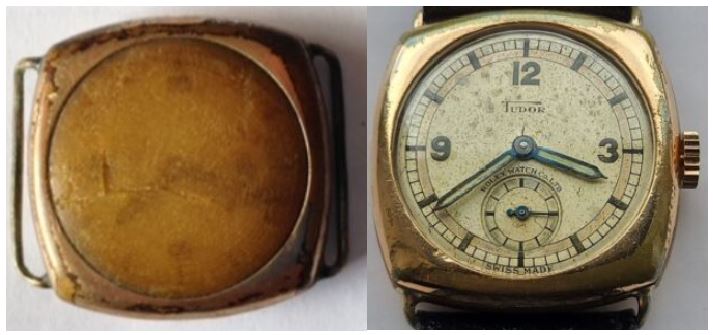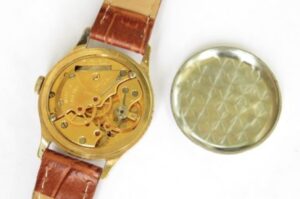Questions about the maintenance of vintage watches frequently arise for anyone involved in buying or selling these timeless pieces. Modern watches often last around a decade, but well-made vintage Swiss watches can endure generations with proper care. This is particularly the case with Swiss watches from the golden era of watchmaking. This includes timepieces produced by esteemed brands like Rolex, Omega, or Patek Philippe. These classic watches hold the potential to last almost indefinitely, becoming personal heirlooms passed down through families. However, to survive across generations, vintage watches need servicing.
Longevity
The longevity of a vintage watch hinges on its design and build quality. Many vintage watches were constructed to a standard rarely seen today. These watches often feature meticulously hand-finished components, which were sometimes over-engineered in ways that modern pieces are not. This robust construction, coupled with the attention to detail applied by skilled craftsmen, contributes to their durability. However, just like any other piece of complex machinery, a vintage watch requires regular servicing to maintain its accuracy, reliability, and appearance over time. Without consistent maintenance, the light oils used in the movement dry out, causing friction in its delicate gears and increasing the risk of wear. By scheduling regular servicing and oil changes, owners can minimise this wear. This preserves watches for decades and ensures that each tick remains as precise as the day it was made (Vintage Watch Care Tips at Bob’s Watches).
Service frequency
Deciding how often a vintage watch should be serviced is a matter of some debate among collectors and watchmakers. Advice varies from every 12 to 18 months to every 10 years. However, many collectors find the shorter timeframe unnecessary, particularly for watches that aren’t used daily. Environmental conditions and usage habits play a significant role in determining the ideal interval between services. For example, collectors living in warmer climates such as India or South Africa, where the watches are frequently exposed to high temperatures, might opt to have them serviced every two years to maintain optimal performance. Meanwhile, those living in milder climates like Britain, Europe, or North America may find that a service every three to four years is more than adequate to keep their watches in excellent condition.
Servicing: official distributors
Selecting the right place to service a vintage watch is crucial and can be a surprisingly complex decision. Many assume that the best option is to send their watch back to the original manufacturer for maintenance. This assumption seems logical: if a vintage Rolex or Omega needs servicing, why not entrust it to the brand itself or one of its official agents? However, while factory servicing is undoubtedly of high quality, it may not always respect the historical character of vintage pieces. Modern manufacturers focus primarily on the creation of new watches rather than on the preservation of models that may have been out of production for decades. As a result, they may lack the detailed knowledge of older models or overlook nuances important to collectors.
Service vs restoration
Consider, for instance, a vintage TAG Heuer we once sent to the factory for servicing. The watch returned with a pristine white dial replacing the original champagne-coloured one, which had developed a unique patina over the years. While the original dial was returned to us, the charm and originality of the watch were somewhat compromised. Similarly, we have seen instances where original hands, bezels, or winding crowns were replaced with newer components that, while more functional, detracted from the originality valued by collectors. Polishing can have a similar effect. It might improve the appearance, but it can alter the shape of the case (Why polishing an old watch will ruin its value at GQ).
This disconnect between modern brands and their vintage models is partly due to the fact that many watch manufacturers today are not especially familiar with the details of their vintage collections. With their primary focus on producing new models and maintaining current lines, it’s understandable that they might not retain comprehensive knowledge about models produced 40 or 50 years ago. However, this is where the expertise of independent watchmakers can be invaluable.
Independent watchmakers
During my time as a vintage watch collector, I have found that the best servicing, particularly for those wanting to maintain full originality, often comes from independent watch repairers with decades of expertise. These craftsmen frequently have encyclopaedic knowledge of older models and components. Often, they have worked on watches from the 1960s and ‘70s when these pieces were new. Many of these skilled watchmakers have accumulated collections of original vintage parts over time. This allows them to restore watches with an authenticity that can be difficult to achieve with official service centres. Interestingly, these repairers are often focused solely on the technical aspects of their craft and may be unaware of the market value of the watches they service.
The extent to which an owner engages with vintage watch maintenance often depends on the size of their collection and their level of commitment. For someone who owns a small collection, it may be sufficient to rely on the place of purchase for servicing.
In contrast, for individuals deeply involved in collecting vintage watches, it becomes essential to build a relationship with a skilled watchmaker. Much like classic car enthusiasts who work closely with specialised mechanics. Vintage watch collectors benefit from a reliable watchmaker who understands their specific needs. Once found, these professionals should be valued and respected for their unique expertise. Additionally, they offer a valuable service at rates that are often far more affordable than those of major brands. Having a local source for vintage-friendly servicing can make a substantial difference in preserving a collection over the long term.
Classified information
One of the intriguing aspects of the vintage watch world is that collectors and dealers rarely share the details of their preferred watchmakers. This tendency makes sense after investing time and effort into building a relationship with a reliable repairer. This watchmaker may already have a heavy workload. Therefore, collectors are understandably reluctant to share access to this resource with others.
For newcomers, finding a skilled independent watchmaker can feel daunting. The fear of entrusting a valuable vintage heirloom to an unskilled or careless repairer is legitimate. This is especially the case for those who may not yet have connections within the community. Experience has shown that watchmakers accredited by the British Horological Institute (BHI) are typically both capable and fair in their pricing. The BHI maintains stringent standards, certifying only those repairers who meet high technical benchmarks.
Summary
Although we primarily rely on our preferred watchmaker, J.J. Browne & Son, who has been indispensable in restoring and maintaining the vintage watches in my collection. However, the professionalism of BHI-accredited repairers across the UK is also impressive. Ultimately, caring for a vintage watch requires commitment and attention. However, the reward is a timepiece that serves as both a functional watch and a piece of history.



Leave a Reply